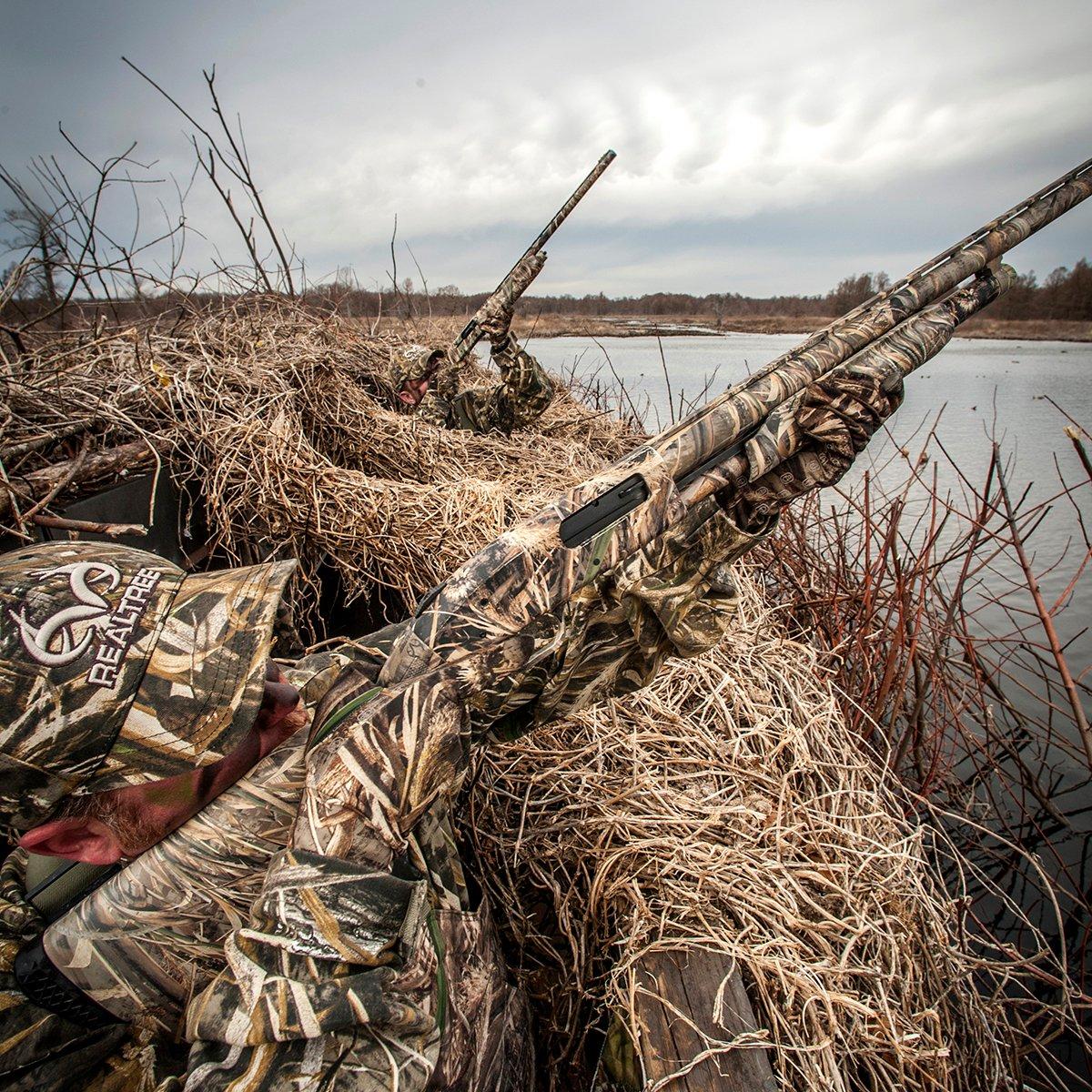Waterfowling is dangerous enough. Don't create peril by mishandling your shotgun

Not so fast.
Any hunter safety instructor will tell you that youngsters often display better gun-safety habits than veteran hunters. Too often, adults get distracted by other concerns or simply gloss over lessons they learned decades earlier. That's a big mistake, especially while hunting waterfowl, when ice, crowded blinds, eager dogs and unstable shooting platforms can complicate matters.
Let's review some simple firearms safety rules you should obey every time you enter a duck blind or goose pit.
Game of Zones
I've harped on this before, but some people forget this basic principle or just ignore it. If other hunters are on your left and right — like in a duck blind or when field-hunting geese — your safe zone of fire is 10 o'clock to 2 o'clock and directly overhead. If you exceed those limitations, you endanger the hearing and possibly safety of other hunters. My right ear rings every second because a friend broke this rule in horrible fashion one fall.
Know Your Background
It's easy to adhere to this rule when hunting big water, gunning a back-roads prairie slough or shooting geese in a stubble field. Crowded public marshes, however, complicate matters. When other hunters set up 100 yards downwind of your spread in the dark — and trust me, they will — and are somewhat hidden by cattails or wild rice, it's very easy for them to go unnoticed. Pay attention to any hunters in the area, and avoid low or water-level shots toward other groups. I've been stung by pellets from hunters who thought they were far enough away, and two friends have actually been wounded by a pellet or two in such situations.
Also, when hunting near farms or urban areas, make sure your pellets don't rain down on buildings. It's amazing how far they can travel, especially with the wind behind them. And nothing will get you kicked off good duck water faster than spraying the landowner's house with No. 4 Hevi-shot.
Watch the Dog
Most dog owners watch their four-legged companions closely to ensure they behave and remain safe. Other hunters don't pay that much attention. They mean no harm, of course, but some guys might shoot at a crippled duck as the dog is chasing it or has broken from the skiff or blind. Keep your dog steady until the shooting is finished, and gently remind your buddies to watch their muzzles and patterns around the retriever.
Conversely, watch your dog in tight blind or field-hunting situations to ensure he doesn't get tangled in gun slings or, worse, trigger guards. It can happen with excitable pooches. Keep them under control and away from potentially dangerous snags.
Keep Your Safety On Until You're Ready to Shoot
This seems so rudimentary, yet I've broken this rule a time or two. Don't ask me why. It takes a millisecond to flip off your safety while simultaneously rising to shoot, so there's no advantage to taking it off early. Yet I've done so and then forgot to place the gun back on safe. Not cool.
Also, make sure you return the safety to the on position after firing your gun and reloading. It's easy to forget this during the excitement of a hunt.
Check Your Muzzle and Breech for Obstructions
Duck hunters are always getting junk on their guns, including mud, ice, cattails and rice stalks. Take time during a hunt to check your muzzle and breech for obstructions, especially if you're hunting in snow, muddy conditions or heavy vegetative cover. I've had snow and ice in my shotgun barrel several times while hunting the Dakotas, and I wouldn't have known about it had I not checked. Unload your gun, examine the breech and muzzle, clear any obstructions and then resume hunting.
Conclusion
Wind, cold and rough water bring enough danger to waterfowl hunting. Don't add to that by being careless with your shotgun this season. Put basic safety rules before your desire to shoot a limit. Everyone in the blind will be thankful.
Click here for more Realtree waterfowl hunting content. And check us out on Facebook.







